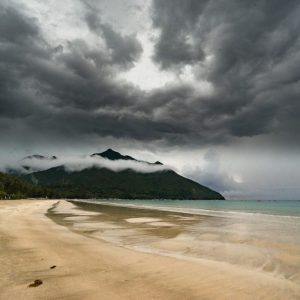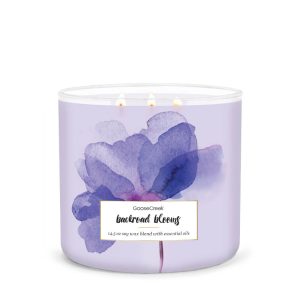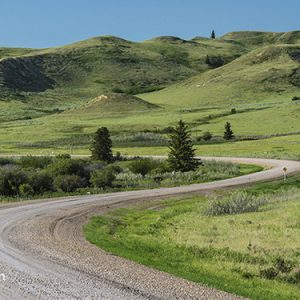
Chasing Waterfalls: A Georgia Backroads Adventure
Georgia, a state often lauded for its peaches and Southern charm, harbors a secret world of cascading beauty: its hidden waterfalls. Forget the crowded tourist traps; this is a journey into the heart of the state, down unpaved roads and through lush forests, in pursuit of nature’s liquid jewels. This isn’t just a list of waterfalls; it’s a story of discovery, a testament to the raw, untamed beauty waiting just beyond the well-trodden path.
Beyond the Tourist Trail: Embracing the Backroads
The thrill of chasing waterfalls in Georgia lies in the journey itself. Forget the perfectly manicured parks and paved walkways. This is about navigating winding dirt roads, the tires of your vehicle whispering secrets to the ancient pines. The GPS may falter, the map might be ambiguous, but that’s part of the adventure. Each unexpected turn reveals a new vista, a hidden creek whispering its way to a larger body of water, a glimpse of the untamed wilderness.
This isn’t a race against time; it’s a mindful exploration. Embrace the slower pace, savor the quiet solitude, and allow the beauty of the Georgia backroads to wash over you. The rewards are immeasurable – the sights, sounds, and smells of a Georgia rarely seen.
A Cascade of Gems: Georgia’s Hidden Waterfalls
Georgia boasts a diverse collection of waterfalls, each with its unique character and charm. While some are easily accessible, others demand a little more effort, rewarding the adventurous with unparalleled natural beauty.
| Waterfall Name | Difficulty | Highlight |
|---|---|---|
| Amicalola Falls | Easy | Georgia’s tallest waterfall, easily accessible via paved trails. |
| Anna Ruby Falls | Easy | Twin waterfalls with stunning views, requires a short, well-maintained walk. |
| Toccoa Falls | Easy | Powerful waterfall with a dramatic drop, located near a college campus. |
| Tallulah Gorge State Park (various falls) | Moderate to Difficult | Stunning gorge with multiple waterfalls, requires permits and can be challenging hikes. |
| Raven Cliff Falls | Moderate | A hidden gem, requiring a moderate hike through the forest. |
This table is merely a glimpse into the vast array of waterfalls Georgia offers. Numerous others remain hidden, waiting to be discovered by those willing to venture off the beaten path.
Beyond the Waterfalls: Exploring Georgia’s Natural Beauty
Chasing waterfalls in Georgia isn’t just about the falls themselves. It’s about immersing yourself in the surrounding natural splendor. The journey often leads you through breathtaking forests, across babbling brooks, and past wildlife that calls this land home. Keep an eye out for vibrant wildflowers, soaring birds of prey, and the myriad of creatures that make Georgia’s wilderness their sanctuary.
Planning Your Adventure: Tips for a Successful Trip
Before embarking on your waterfall chase, thorough planning is crucial. Research your chosen destinations, checking for accessibility, trail conditions, and any necessary permits. Pack appropriately for the weather conditions, including sturdy footwear, insect repellent, sunscreen, and plenty of water. Inform someone of your itinerary and expected return time, particularly when venturing into more remote areas.
Remember, respect the environment. Leave no trace behind, and maintain a safe distance from the waterfalls and their surroundings. The beauty of these natural wonders should be preserved for generations to come.
Conclusion: A Journey to Remember
Chasing waterfalls in Georgia is more than just a sightseeing trip; it’s an immersive experience that connects you with the raw beauty and untamed spirit of the state. It’s a journey that will challenge you, inspire you, and leave you with memories that will last a lifetime. So, pack your bags, grab your camera, and prepare to be captivated by the magic of Georgia’s hidden waterfalls – a journey you won’t soon forget.

Additional Information
Chasing Waterfalls: A Georgia Backroads Adventure – A Deeper Dive
While a surface-level account of a Georgia backroads waterfall adventure focuses on the scenic beauty and recreational aspects, a deeper analysis reveals several interconnected themes worthy of exploration. This expanded analysis will delve into the geographical, ecological, economic, and social implications of such an undertaking, offering a more comprehensive understanding of the experience.
I. Geographical Context and Hydrological Significance:
Georgia’s diverse topography, shaped by the Appalachian Mountains and coastal plains, directly influences the distribution and characteristics of its waterfalls. The Blue Ridge Mountains, for instance, are known for their steep gradients and abundant rainfall, leading to numerous cascading waterfalls. Analyzing specific waterfall locations within the “Chasing Waterfalls” itinerary allows for a deeper understanding of geological formations. For example, are the falls formed by resistant rock layers (e.g., quartzite) overlying softer strata, leading to differential erosion? Identifying the specific geological formations involved can provide valuable insights into the age and evolution of the landscape.
Furthermore, the hydrological cycle plays a critical role. Rainfall patterns, seasonal variations in water flow, and groundwater recharge directly impact the volume and aesthetic appeal of the waterfalls. Examining historical rainfall data for the region and correlating it with waterfall flow rates would provide valuable information about the impact of climate change on these natural features. This data could be used to predict future changes and inform conservation efforts.
II. Ecological Considerations and Biodiversity:
The areas surrounding Georgia’s waterfalls represent unique ecosystems, often supporting high biodiversity. A detailed analysis of the “Chasing Waterfalls” adventure should consider the plant and animal life found in these ecosystems. Specific examples, such as the presence of rare plant species or endemic animal populations, could be highlighted. Furthermore, the impact of human activity, including tourism, on these fragile ecosystems needs to be evaluated. This might involve examining potential threats like soil erosion, pollution from litter or runoff, and habitat disturbance.
A case study comparing the ecological health of a heavily trafficked waterfall site versus a less accessible one could highlight the significance of sustainable tourism practices. This might include data on water quality parameters (e.g., dissolved oxygen, pH), vegetation cover, and the abundance of indicator species.
III. Economic Impacts and Sustainable Tourism:
“Chasing Waterfalls” inadvertently contributes to the local economy. Understanding the economic ripple effect is crucial. This could involve analyzing the revenue generated from tourism-related activities, such as lodging, restaurants, and guided tours operating near the waterfall locations. Estimating the economic contribution of the adventure to local communities provides a tangible measure of its impact.
However, uncontrolled tourism can lead to negative economic consequences. Overuse can damage natural resources, leading to decreased tourism appeal in the long run. Therefore, the analysis needs to address the principles of sustainable tourism, including carrying capacity estimations for each waterfall site and strategies for managing visitor numbers to minimize environmental damage.
IV. Social and Cultural Significance:
Waterfalls have held cultural significance for various communities throughout history, often being associated with myths, legends, and spiritual practices. Integrating historical and cultural context into the analysis of the “Chasing Waterfalls” adventure can provide valuable insights. This could involve exploring local narratives associated with specific waterfalls, documenting any traditional uses of the water resources, or discussing the role of these natural features in shaping local identities.
Furthermore, analyzing the accessibility of these natural resources to diverse communities is essential. Ensuring equitable access and promoting inclusivity are crucial aspects of responsible tourism.
Conclusion:
While a narrative about “Chasing Waterfalls” primarily focuses on personal experiences, a deeper analytical perspective reveals the complex interconnectedness of geographical, ecological, economic, and social factors. By incorporating quantitative data, ecological assessments, and socio-economic analyses, we can transform a simple travelogue into a valuable contribution to understanding the sustainable management of natural resources and the promotion of responsible tourism in Georgia. This richer analysis underscores the importance of considering the broader implications of recreational activities, ensuring the preservation of these natural wonders for future generations.






